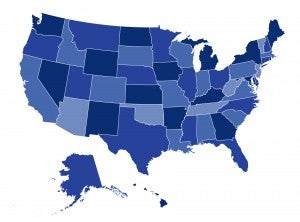
Network adequacy has been among the more challenging to implement criteria for health plan certification under the Affordable Care Act (ACA). The ACA requires qualified health plans (QHPs) to include an “adequate” provider network, but the law didn’t clearly define what that meant. After the first year of the ACA’s exchanges, it was quickly apparent that different insurers had very different ideas about what an adequate network was.
Insurers recognized that they could offer lower premium plans if they had narrow provider networks. In 2014, as many as 41 percent of plans sold on the ACA marketplaces had “small or extra small” provider networks. More recent data suggest that many insurers narrowed their networks even further in 2015 and 2016. In general, narrow network plans have performed better financially for insurers than plans with broader networks.
At the same time, while most states had some standards for assessing the adequacy of health plan networks, few had kept up with changes in health plan design and many departments of insurance (DOIs) lacked capacity for the kind of oversight required for QHP certification. The Obama Administration, through the Center for Consumer Information and Insurance Oversight (CCIIO), responded to concerns about shrinking networks with more explicit standards for achieving network adequacy certification and stepped-up oversight.
Now, under Secretary Price, the Trump Administration has published its first significant indication of how it intends to run the ACA’s marketplaces and in this context at least, it will take a hands-off approach, largely deferring to states’ network adequacy standards and review processes.
New Approach to Network Adequacy Oversight
In its proposed rule, CCIIO has retained the network adequacy standard adopted by the Obama Administration, which requires insurers to maintain a network that assures “that all services will be accessible without unreasonable delay.” However, they will not conduct their own reviews of QHP networks and will not use the maximum time/distance-to-provider criteria outlined in Obama-era guidance to insurers participating on the federal marketplaces. Going forward, CCIIO will rely almost entirely on the states to assess whether insurers meet that standard. Specifically, as long as a state DOI has authority to review health plan networks and the means to do so, CCIIO will defer to the state’s assessment, even if the state is not officially conducting marketplace plan management.
If a state lacks the authority or the means to “conduct sufficient network adequacy reviews,” then CCIIO will rely instead on the insurer’s accreditation status. However, the accreditation process is different from the provider network review that a state or federal regulator would conduct. Accreditors such as the National Committee for Quality Assurance (NCQA) do not set a network adequacy standard; rather, they ask insurers to set their own network adequacy standard and then ask if the standard is met.* CCIIO further notes that it intends to coordinate with states to monitor network adequacy, such as by tracking and sharing data on consumer complaints.
Potential Impact and Issues for States and Marketplace Enrollees
While the future of the ACA’s marketplaces remains uncertain, insurers are likely to continue to push the envelope towards narrower provider networks in order to deliver more competitive premiums for consumers. And while many consumers have shown willingness to trade a broad choice of providers for a lower price, overly narrow networks could impinge on their ability to access care in a timely way.
Most states have regulatory authority to conduct a network adequacy review for most plans sold on the marketplaces. What is less clear is whether they have the “means,” by which we assume that CCIIO is referring to regulatory capacity and resources. Many state DOIs have staff that proactively review plans’ provider networks and challenge those that don’t meet minimum standards, and they have expressed frustration with “federal interference” in what they see as a state function. However, some states do not conduct network adequacy reviews; in these states, CCIIO has done them. It remains to be seen, in the absence of federal oversight, whether these states will have the capacity or willingness to take on a more expanded role. Accreditation alone will not assure that consumers have access to plans with adequate provider networks.
*The author currently serves on NCQA’s Health Plan Standards Committee.


1 Trackback or Pingback